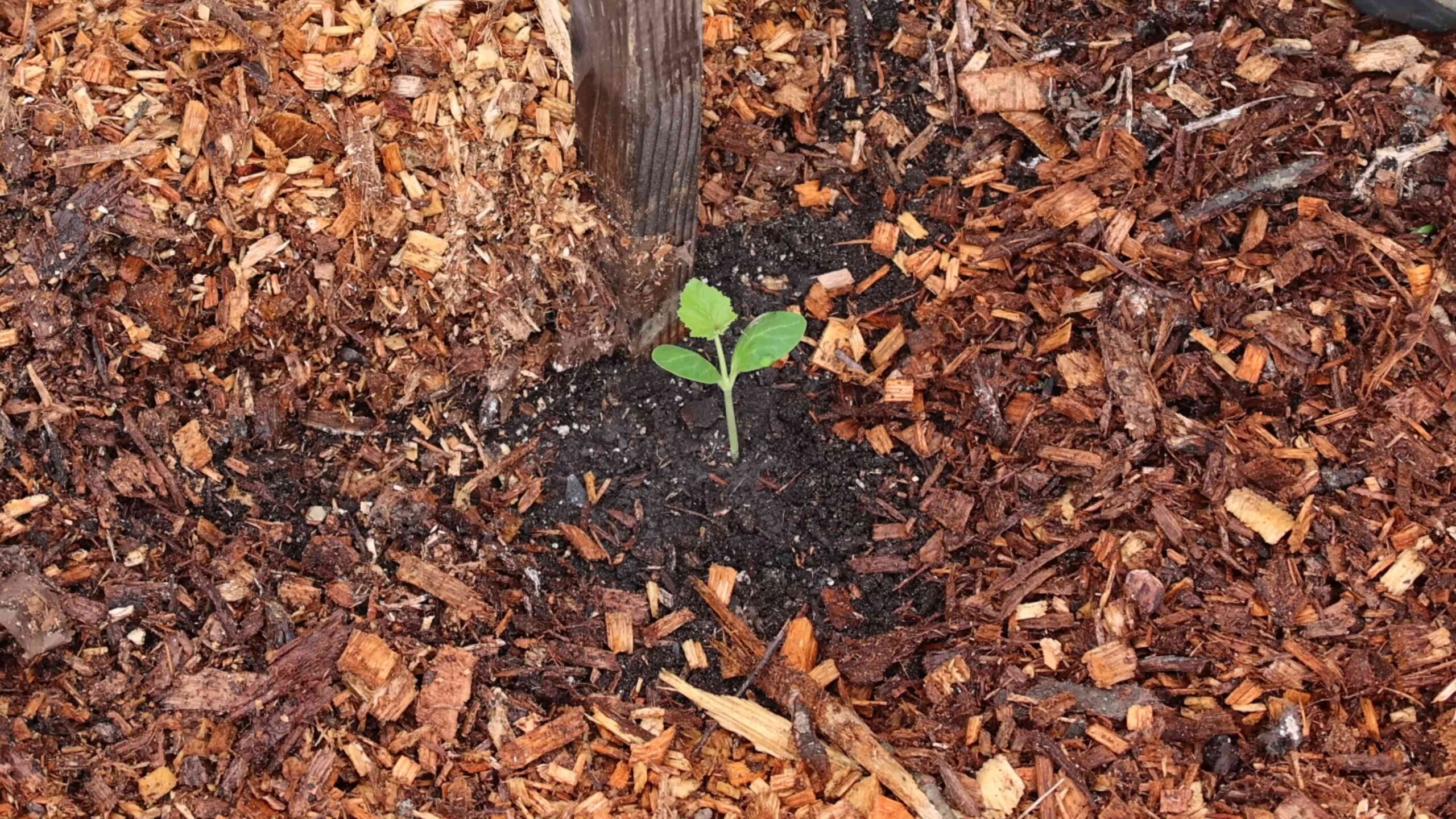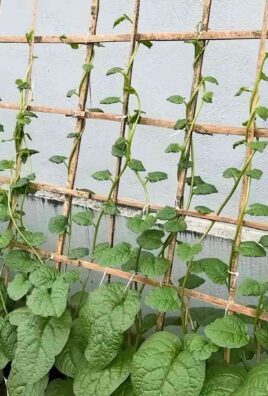Growing Squash Vertically: Unlock a bountiful harvest in even the smallest of spaces! Have you ever dreamed of a garden overflowing with delicious squash, but felt limited by your tiny backyard or balcony? Well, dream no more! This DIY guide is your secret weapon to maximizing your yield and minimizing your footprint. We’re diving deep into the wonderful world of vertical gardening, specifically tailored for those sprawling squash plants.
For centuries, cultures around the globe have ingeniously employed vertical gardening techniques. From the hanging gardens of Babylon to the terraced rice paddies of Asia, the concept of growing upwards has always been a solution to limited land. Now, we’re bringing that ingenuity to your home garden, focusing on how to make growing squash vertically a resounding success.
Let’s face it, traditional squash growing can be a space hog. Those vines love to sprawl, often taking over entire garden beds and leaving little room for other vegetables. But with our easy-to-follow DIY tricks and hacks, you can reclaim your garden space, prevent common squash diseases (like powdery mildew caused by ground contact), and even make harvesting easier on your back! I’m excited to share these tips with you, so you can enjoy a thriving squash harvest, no matter how small your garden may be. Get ready to transform your gardening game!

Growing Squash Vertically: A DIY Guide to Bountiful Harvests in Small Spaces
Hey there, fellow gardeners! Are you dreaming of a squash-filled autumn but short on garden space? Well, I’ve got fantastic news: you can absolutely grow squash vertically! It’s a game-changer, trust me. I’ve been doing it for years, and it’s not only space-saving but also helps with air circulation, reducing the risk of diseases. Plus, it looks pretty darn cool! Let’s dive into how you can create your own vertical squash garden.
Choosing the Right Squash Variety
Before we get our hands dirty, it’s crucial to pick the right squash variety. Not all squash are created equal when it comes to vertical gardening. You’ll want to focus on bush or semi-bush varieties that produce smaller fruits. Think about these options:
* Zucchini: These are generally well-suited for vertical growing, especially compact varieties like ‘Bush Baby’ or ‘Spacemiser’.
* Yellow Squash: Similar to zucchini, choose bush types for easier management.
* Delicata Squash: These are smaller and lighter than many winter squash, making them a good choice.
* Acorn Squash: Some smaller acorn squash varieties can be grown vertically, but you’ll need to provide strong support.
* Patty Pan Squash: These are relatively compact and easy to manage on a trellis.
Avoid large vining varieties like pumpkins or butternut squash unless you’re prepared to build a seriously robust support system. They can get incredibly heavy!
Building Your Vertical Support System
Okay, now for the fun part: building the structure that will hold our squash. There are several options here, depending on your budget, space, and DIY skills. I’ll walk you through a few of my favorites.
Option 1: The Sturdy Trellis
This is my go-to method. A well-built trellis can last for years and provide excellent support.
Materials You’ll Need:
* Wooden posts (4×4): At least 8 feet long. The length depends on how high you want your trellis.
* Wooden slats (1×2 or 1×4): For creating the trellis grid.
* Screws or nails: For attaching the slats to the posts.
* Wood stain or sealant (optional): To protect the wood from the elements.
* Measuring tape
* Saw
* Drill or hammer
* Level
Step-by-Step Instructions:
1. Prepare the Posts: If you’re using untreated wood, apply a wood stain or sealant to protect it from rot. Let it dry completely.
2. Position the Posts: Dig holes for your posts about 2-3 feet deep, spacing them 4-6 feet apart. The spacing depends on the length of your slats and how wide you want your trellis.
3. Set the Posts: Place the posts in the holes and fill the holes with concrete or compacted soil to secure them. Use a level to ensure the posts are straight.
4. Attach the Slats: Once the posts are secure, start attaching the wooden slats horizontally to create the trellis grid. Space the slats about 6-12 inches apart. Use screws or nails to attach them securely to the posts.
5. Add Vertical Slats (Optional): For extra support, you can add vertical slats as well, creating a grid pattern.
6. Reinforce (If Needed): If you’re planning to grow heavier squash varieties, consider adding diagonal braces to the trellis for extra stability.
Option 2: The Cattle Panel Arch
This is a simpler and more affordable option, especially if you’re growing in raised beds.
Materials You’ll Need:
* Cattle panel: These are readily available at farm supply stores. Choose a panel that’s at least 16 feet long.
* Metal T-posts: For anchoring the panel.
* Zip ties or wire: For securing the squash vines to the panel.
* Hammer
Step-by-Step Instructions:
1. Shape the Arch: Gently bend the cattle panel into an arch shape.
2. Position the Arch: Place the ends of the arch into your garden bed, spacing them about 4-6 feet apart.
3. Secure the Arch: Drive metal T-posts into the ground on either side of the arch to anchor it securely. Attach the cattle panel to the T-posts using zip ties or wire.
Option 3: The Tomato Cage Hack
This is the easiest and cheapest option, perfect for smaller squash varieties or if you’re just starting out.
Materials You’ll Need:
* Large tomato cages: The sturdier, the better.
* Zip ties or twine: For extra support.
Step-by-Step Instructions:
1. Place the Cage: Position the tomato cage over your squash plant when it’s still young.
2. Secure the Vines: As the squash vines grow, gently guide them up the cage and secure them with zip ties or twine.
Planting Your Squash
Now that your support system is ready, it’s time to plant your squash!
Step-by-Step Instructions:
1. Prepare the Soil: Squash are heavy feeders, so make sure your soil is rich in organic matter. Amend it with compost or well-rotted manure before planting.
2. Planting Seeds or Transplants: You can either direct sow squash seeds or start them indoors and transplant them later. If you’re transplanting, be gentle with the roots.
3. Spacing: Space your squash plants according to the variety you’re growing. Check the seed packet or plant tag for specific recommendations. Generally, allow at least 2-3 feet between plants.
4. Watering: Water your squash plants thoroughly after planting.
5. Mulching: Apply a layer of mulch around the plants to help retain moisture and suppress weeds.
Training Your Squash Vines
This is where the “vertical” part really comes into play. You’ll need to actively train your squash vines to grow up your chosen support system.
Step-by-Step Instructions:
1. Start Early: Begin training the vines when they’re still young and flexible.
2. Gently Guide: Gently guide the vines towards the trellis, arch, or cage.
3. Secure with Ties: Use soft plant ties, zip ties, or twine to secure the vines to the support structure. Be careful not to tie them too tightly, as this can damage the stems.
4. Regularly Check: Check your squash plants regularly and adjust the ties as needed.
5. Pruning (Optional): You can prune some of the lateral shoots to encourage the plant to focus its energy on producing fruit.
Supporting the Fruit
As your squash starts to develop, you may need to provide extra support for the fruit, especially if you’re growing larger varieties. This is crucial to prevent the vines from breaking under the weight of the squash.
Options for Supporting Fruit:
* Slings: Create slings out of old t-shirts, pantyhose, or burlap to support the squash. Tie the slings to the trellis or arch.
* Netting: Use netting to create a hammock for the squash.
* Shelves: Build small wooden shelves to support the fruit.
Caring for Your Vertical Squash Garden
Once your squash is growing vertically, here are a few tips to keep them healthy and productive:
* Watering: Water deeply and regularly, especially during hot, dry weather. Squash need consistent moisture.
* Fertilizing: Fertilize your squash plants every few weeks with a balanced fertilizer.
* Pest Control: Keep an eye out for common squash pests like squash bugs, squash vine borers, and aphids. Use organic pest control methods to protect your plants.
* Pollination: Squash need to be pollinated to produce fruit. If you’re not seeing any fruit develop, you may need to hand-pollinate the flowers.
* Harvesting: Harvest your squash when they’re mature and the skin is firm. The exact timing will depend on the variety you’re growing.
Troubleshooting Common Problems
Even with the best care, you might encounter some challenges when growing squash vertically. Here are a few common problems and how to address them:
* Squash Vine Borers: These pests can tunnel into the stems of your squash plants, causing them to wilt and die. To prevent squash vine borers, wrap the base of the stems with aluminum foil or netting. You can also inject Bacillus thuringiensis (Bt) into the stems to kill the larvae.
* Squash Bugs: These pests suck the sap

Conclusion
So, there you have it! Growing squash vertically isn’t just a gardening trend; it’s a game-changer for maximizing your harvest, conserving space, and adding a touch of architectural beauty to your garden. We’ve explored the numerous benefits, from improved air circulation that combats common squash diseases like powdery mildew to the sheer joy of watching your vibrant vines climb skyward.
This method is a must-try, especially if you’re dealing with limited garden space. Think about it: instead of sprawling across precious ground, your squash plants will reach for the sun, leaving room for other vegetables, herbs, or even a cozy seating area. Plus, harvesting becomes a breeze – no more bending and searching under sprawling leaves!
But the advantages extend beyond mere convenience. By lifting the squash off the ground, you’re significantly reducing its exposure to soil-borne pests and diseases. This translates to healthier plants, bigger yields, and less need for potentially harmful pesticides. It’s a win-win for you and the environment.
Don’t be afraid to experiment with different varieties of squash. While smaller fruited varieties like zucchini, yellow squash, and delicata are naturally well-suited for vertical growing, you can also train larger varieties like butternut squash or even smaller pumpkins with proper support. Consider using strong trellises, sturdy netting, or even repurposed materials like old ladders or cattle panels to create your vertical garden structure.
For a fun variation, try interplanting your vertical squash with companion plants like nasturtiums or marigolds. These colorful flowers not only add visual appeal but also attract beneficial insects that can help control pests. You could also plant basil or oregano nearby, as their strong scents can deter squash bugs.
Remember, the key to successful vertical squash growing is providing adequate support, consistent watering, and regular fertilization. Keep an eye on your plants for any signs of pests or diseases, and address them promptly. And don’t forget to prune your vines as needed to encourage airflow and prevent overcrowding.
We are confident that once you experience the rewards of growing squash vertically, you’ll never go back to the traditional method. It’s an efficient, sustainable, and visually stunning way to cultivate this versatile vegetable.
So, grab your seeds, build your trellis, and get ready to embark on a vertical gardening adventure! We encourage you to try this DIY trick and share your experiences with us. Post photos of your vertical squash gardens on social media using #VerticalSquash or leave a comment below to let us know how it’s going. We’re eager to see your creative setups and hear about your successes (and any challenges you encounter along the way). Happy gardening!
FAQ
What types of squash are best suited for vertical growing?
The best types of squash for vertical growing are those with smaller fruits and manageable vine lengths. Zucchini, yellow squash, delicata squash, and smaller acorn squash varieties are excellent choices. Even some smaller pumpkin varieties can be trained vertically with adequate support. Larger, heavier squash like butternut or hubbard squash can also be grown vertically, but they require very sturdy trellises and may need individual slings or supports for each fruit to prevent them from breaking off the vine. Consider the mature size and weight of the squash when selecting your varieties.
What kind of trellis or support system should I use?
The type of trellis or support system you use will depend on the size and weight of the squash you’re growing. For smaller varieties like zucchini, a simple A-frame trellis, a sturdy tomato cage, or even a section of cattle panel will suffice. For larger varieties, you’ll need a more robust structure, such as a heavy-duty wooden trellis, a metal arch, or a system of strong netting attached to posts. Ensure that the trellis is tall enough to accommodate the full growth of the vines and strong enough to support the weight of the mature fruit. Consider the material of your trellis as well; wood should be treated to prevent rot, and metal should be rust-resistant.
How do I train the squash vines to grow vertically?
Training squash vines to grow vertically is relatively simple. As the vines grow, gently guide them towards the trellis and use soft ties (such as twine, plant tape, or even strips of old cloth) to secure them to the structure. Be careful not to tie the vines too tightly, as this can restrict their growth. Regularly check the ties and adjust them as needed as the vines continue to grow. You may need to prune some of the side shoots to encourage the main vines to climb the trellis.
How often should I water and fertilize my vertically grown squash?
Vertically grown squash plants tend to dry out more quickly than those grown on the ground, so it’s essential to water them regularly, especially during hot, dry weather. Check the soil moisture daily and water deeply whenever the top inch or two of soil feels dry. Fertilize your squash plants every two to three weeks with a balanced fertilizer or a fertilizer specifically formulated for vegetables. You can also amend the soil with compost or other organic matter to provide essential nutrients.
What are some common pests and diseases that affect vertically grown squash, and how can I prevent them?
While vertical growing can help reduce the risk of some pests and diseases, squash plants are still susceptible to certain problems. Common pests include squash bugs, squash vine borers, and aphids. Diseases include powdery mildew, downy mildew, and blossom end rot. To prevent these problems, practice good garden hygiene, such as removing plant debris and weeds. Inspect your plants regularly for signs of pests or diseases and take action promptly. You can use organic pest control methods, such as insecticidal soap or neem oil, to control pests. To prevent diseases, ensure good air circulation around your plants, avoid overhead watering, and consider using a fungicide if necessary.
Can I grow squash vertically in containers?
Yes, you can grow squash vertically in containers, but you’ll need to choose a large container (at least 20 gallons) to accommodate the plant’s root system. Use a well-draining potting mix and provide a sturdy trellis or support system for the vines to climb. Container-grown squash plants will require more frequent watering and fertilization than those grown in the ground. Choose smaller squash varieties for container growing, as they will be easier to manage.
What do I do if the squash fruits are too heavy for the vines to support?
If the squash fruits are too heavy for the vines to support, you can provide additional support by creating slings or hammocks for the fruits. You can use old pantyhose, burlap sacks, or even pieces of cloth to create these slings. Simply tie the sling to the trellis and gently cradle the fruit within it. This will help distribute the weight of the fruit and prevent it from breaking off the vine.
How does vertical growing affect pollination?
Vertical growing does not inherently affect pollination, but it’s important to ensure that your squash flowers are adequately pollinated. Squash plants have separate male and female flowers, and pollination must occur for the female flowers to develop into fruit. If you’re not seeing many bees or other pollinators in your garden, you may need to hand-pollinate the flowers. To do this, simply use a small paintbrush to transfer pollen from the male flowers to the female flowers.
Does growing squash vertically affect the taste or quality of the fruit?
Growing squash vertically does not typically affect the taste or quality of the fruit. In fact, some gardeners believe that vertically grown squash may even taste better due to improved air circulation and sunlight exposure. However, it’s important to provide your plants with adequate water, nutrients, and sunlight to ensure that the fruit develops properly.
What are some creative ideas for vertical squash gardens?
There are endless possibilities for creating unique and visually appealing vertical squash gardens. You can use repurposed materials like old ladders, pallets, or even tires to create your trellis. You can also incorporate decorative elements like flowers, herbs, or even artwork to add visual interest to your garden. Consider using different types of trellises to create a variety of shapes and textures. Let your creativity run wild and create a vertical squash garden that reflects your personal style.





Leave a Comment